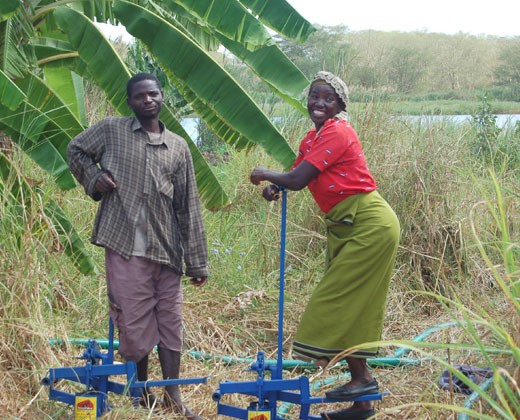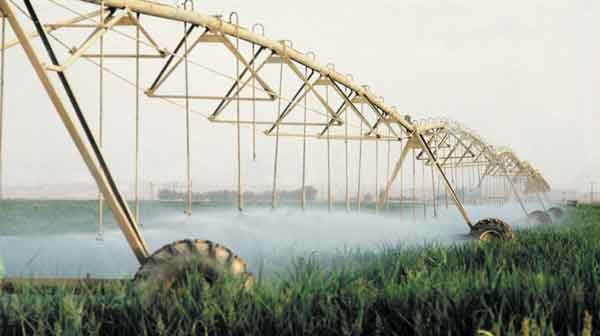Irrigation Systems for Sub-Tropical Agriculture
Technology in irrigation systems has been rapidly advancing across the world. Low flow systems are assisting farmers at reducing the amount of water they need to satisfy the crop’s requirements while keeping their energy and costs associated with irrigation down. ‘Smart Phone’ technology allows farmers to monitor the moisture and temperature in their fields from the palm of their hand, which will greatly reduce waste and increase economic yield when used properly. Advancements in pump designs, water delivery systems, nozzles, and other delivery systems will continue to develop so as to increase our ability to more efficiently produce crops.
There are basically five types of irrigation with variations within each based on your objectives:
- Surface Irrigation (also known as ‘flood’ irrigation) involves most if not all of the surface of the field being flooded
- Sprinkler Irrigation is meant to mimic rainfall. Within this group of delivery systems, new, ‘low flow’ sprinkler irrigation has made great advances, now able to deliver very fine droplets using spinner jets and other configurations that demand less water and still accomplish their objective.
- Drip Irrigation has many different types of systems within it, all based on the premise that the water is dripped at or near the plant so as to specifically feed the plant growing area and not the inter-row area at very low rates as the plant needs it.
- Underground Irrigation or ‘subsurface’ irrigation is delivered by pipes that are porous or perforated in such a way as to water beneath or beside the rootzone, moving by diffusion through the soil to the roots that need it.
- Sub-Irrigation involves actually raising the ground water level to dampen the root zone of the plant.
Yields and water requirements of irrigated and rainfed agriculture

“Irrigation has the potential to provide higher yields than rainfed agriculture but water requirements are also much higher.” Source: FAO
The first two of these methods, surface and sprinkler irrigation, are termed as ‘conventional’ systems. Flood irrigation, or surface irrigation is still commonly used by small farmers across the sub tropics because it doesn’t involve a lot of mechanization or operation skill within it. As we continue to see developing countries assisted with education and technology introduction, more farmers will be able to utilize more sophisticated systems to their ultimate benefit, hopefully. The inaccuracies associated with flood irrigation can create problems relating to salinization, waterlogged soils, microbial death within the soil, and soil compaction. Being more efficient with irrigation delivery systems will increase crop yields and labor efficiency, as well as more sustainable soil management where it can be adopted.
Small Farm Irrigation Systems
There is hope for the small farmers in developing countries for providing supplementary irrigation. When local watering sources are available, simple manually operated pumps like the ‘Treadle Pump” allow for a resource-poor farmer to manage according to their needs.
With efficiencies in small diesel engines, pumping systems that can be ‘sized down’ for smaller fields are evolving. Electric powered systems are also developing so as to be operated more efficiently than decades past.

Treadle pumps allow the people of Southern Malawi to use their own foot power to pull water from the Shire River to irrigate their crops. Source: USAID
Using Waste Water for Irrigation Systems
There is great potential in the utilization of waste water for irrigation purposes if managed properly. If waste water can be treated so as to enable its reuse on cropland, significant savings in water costs for irrigation systems, and a reasonable benefit from the nutrient content of the wastewater can be achieved simultaneously. Recovery of waste water Nitrogen, Phosphorus, and Potassium; among other elements by the crop, and converted to biomass not only can reduce fertilizer costs, but can keep these potential pollutants out of the watercourses and surface waters of a given watershed.
Utilizing irrigation in Agricultural Systems to not only satisfy general water balance in crop producing soils, but to time the watering according to the plant’s requirement for maximum yield continues to bring interest to sub-tropical agriculture, where rainfall may not be available when the crops need it the most.
You can learn more about irrigation systems by visiting these websites:
Improving Irrigated Production – FAO
Irrigation Management in Humid and Sub Humid Areas – USDA
Factors to Consider in Selecting a Farm Irrigation System – University of Georgia Extension
By: John Deibel, Agronomist and Contributing Freelance Writer for Tractor Supply
How do you liked this post? Help us by sharing it on Facebook or Google+





